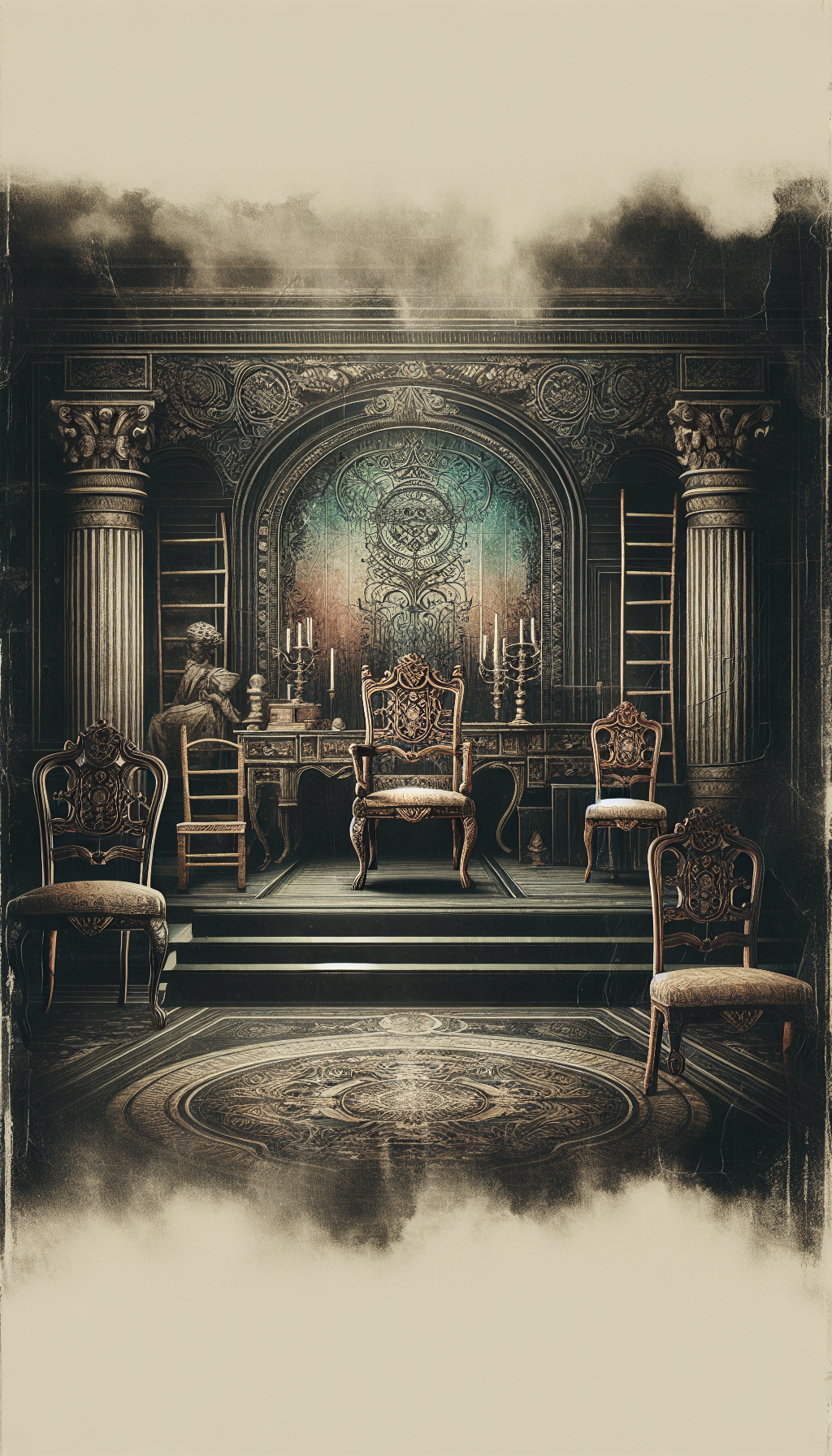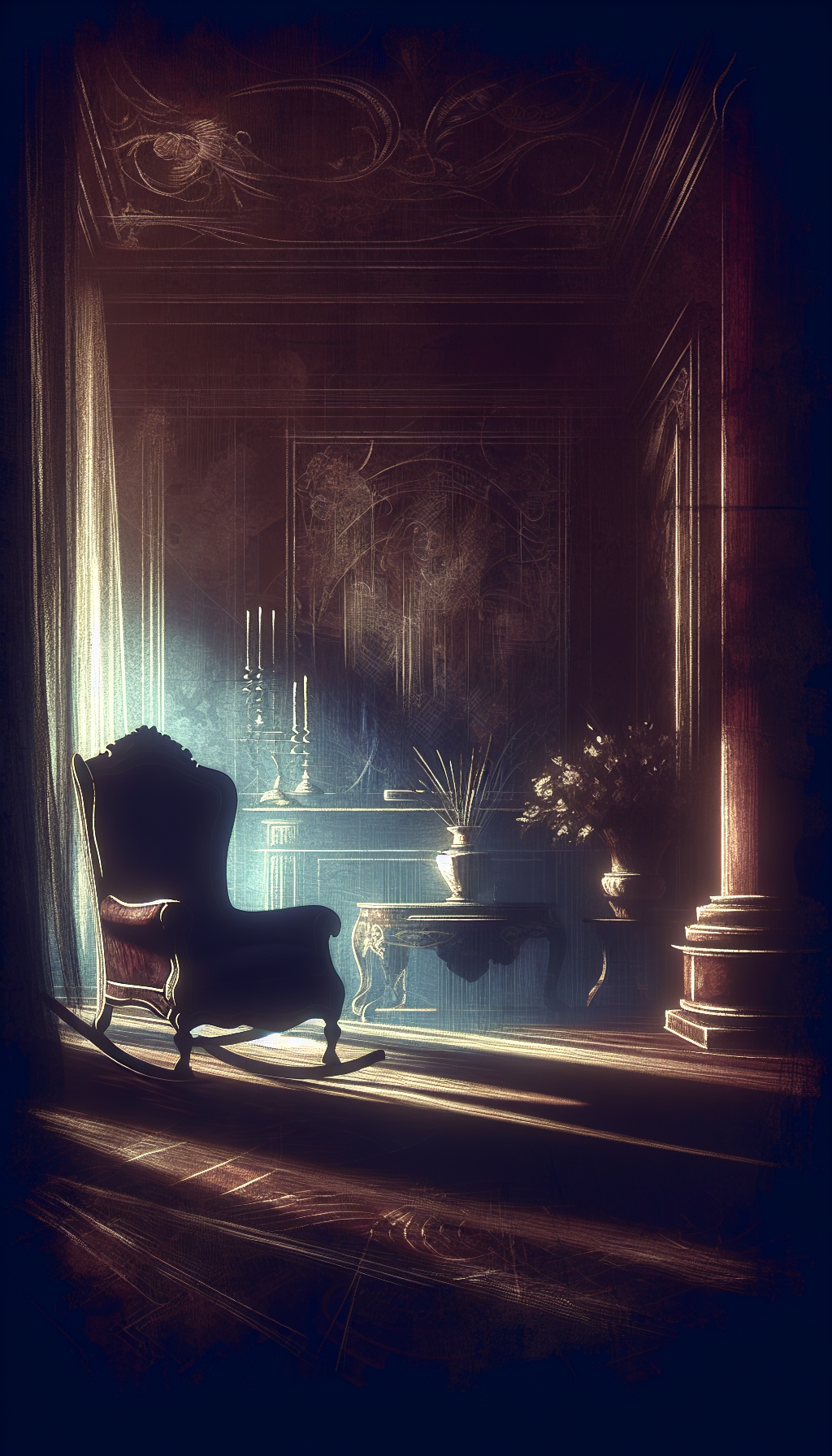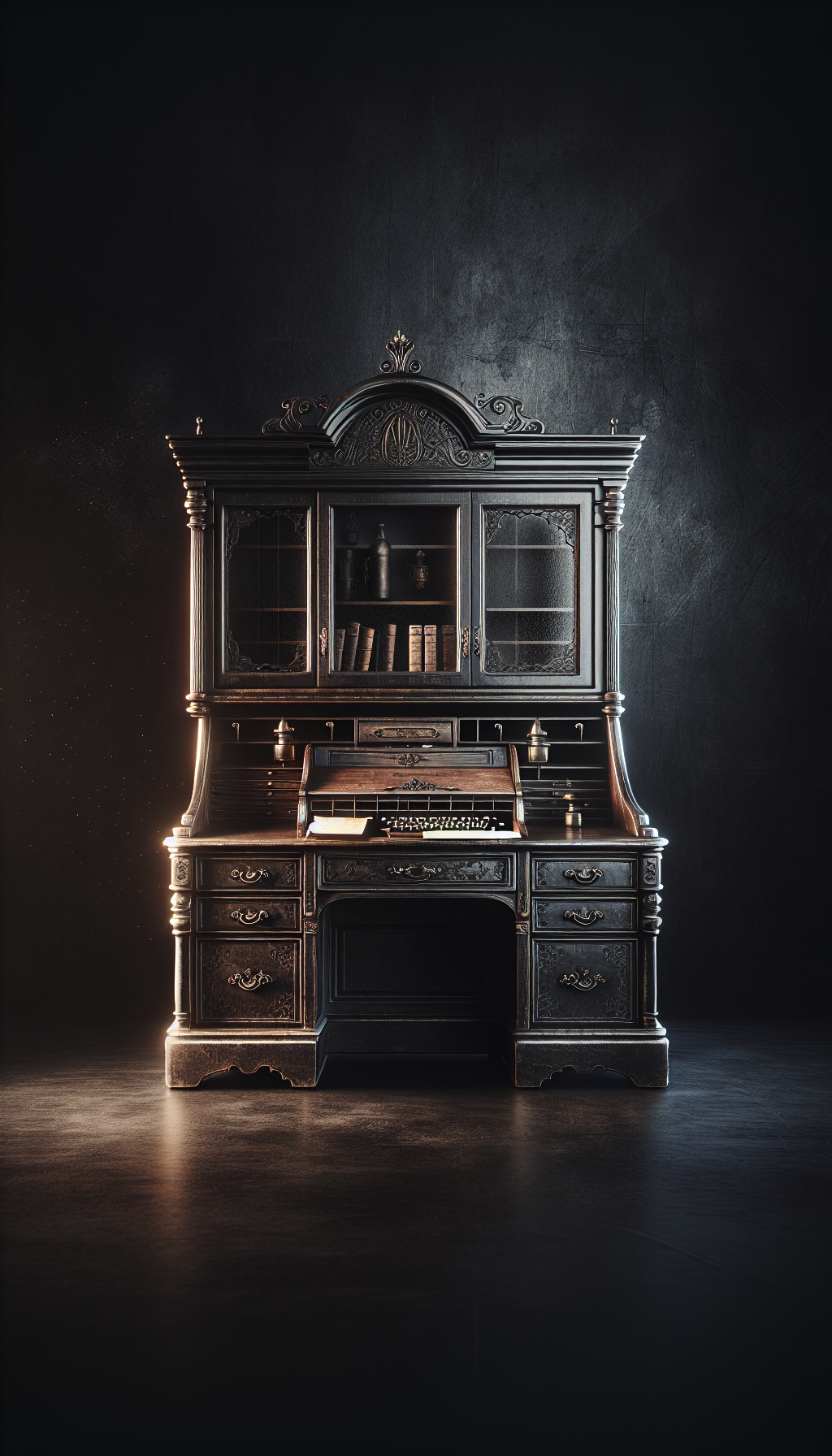A Vintage Circa Mid 20th Century Chinese Screen Divider
Mid-20th-century Chinese screen dividers—folding floor screens with four to twelve hinged panels—blend decorative appeal with practical use. They were made across China and Hong Kong for domestic use and the export market, with a wide spectrum of quality, materials, and techniques. For appraisers and enthusiasts, their appeal lies in deciphering construction methods, motifs, and marks to establish age, quality, and value.
This guide walks through what to look for, how to date and care for a vintage circa mid-century screen, and what drives the market today.
Historical Context and Types You’re Likely to Encounter
Folding screens (pingfeng) have been part of Chinese interiors for centuries, but the mid-20th century saw a resurgence driven by export demand and urban decorating trends. You’ll most often encounter:
- Painted and gilded lacquer “Coromandel-style” screens: Built on wooden or plywood cores with multiple lacquer layers, incised and colored to depict landscapes, court scenes, or the “Hundred Antiques.” True 17th–18th century Coromandel is rare; most mid-century examples are reproductions of earlier styles, ranging from tourist-grade to high-quality workshop pieces.
- Mother-of-pearl and hardstone inlaid screens: Thin shell or stone (soapstone, jadeite simulants, serpentine) cutouts set in mastic against black or cinnabar-red lacquer grounds, often with gilt linework.
- Carved hardwood screens with relief panels: Frames of hongmu (a rosewood group), elm, camphor, or other hardwoods, fitted with carved panels depicting flora-and-fauna or figure scenes; sometimes combined with porcelain or reverse-painted glass plaques.
- Textile-panel screens: Silk painting or embroidery mounted within hardwood frames, frequently from Suzhou or Shanghai workshops.
- Hong Kong and Macau export screens: Typically 4 or 6 panels, slightly lighter frames, bright gilding, and paper or foil labels reading “Made in Hong Kong,” “Canton,” or shop names.
Typical heights range from 60–84 inches for floor screens, with widths varying by panel count. Miniature tabletop screens also exist but are a different collecting category.
Materials and Construction: Clues Hidden in the Build
Understanding what your screen is made of—and how—offers strong dating and quality indicators.
- Frames and cores:
- Mid-century export screens commonly use hardwood frames with mortise-and-tenon joinery at the stiles/rails. Better examples have tight, pegged joints; modest pieces may rely on dowels and glue.
- Panel cores are often a softwood lattice with plywood facing (multi-ply veneers visible at broken edges). Solid planked cores are less common in mid-century examples and suggest higher quality or earlier manufacture.
- Camphor wood may be used for internal elements; a distinct camphor aroma can linger when disturbed.
- Lacquer work:
- Coromandel-style (incised lacquer) involves multiple lacquer layers incised to create designs, then filled with pigments and gilding. Mid-century work tends to be thinner, with more uniform, sometimes machine-assisted incisions, and spray-applied glossy topcoats.
- Cinnabar-style carved lacquer panels may be factory-made and inset; look for repeating patterns indicating mold assistance on low-end pieces.
- Inlay:
- Mother-of-pearl thickness is a quality tell: thicker, iridescent shell with sharp edges and tight inlay channels generally indicates better workshop work. Crude, thick mastic and gapping around inlays suggest lower quality.
- Hardstones will vary in translucency and polish; brittle mastic failure is common in older pieces.
- Hardware:
- Brass butterfly or barrel hinges are typical. Mid-century examples frequently use machine-made hinges with uniform knuckles and Phillips-head screws (Phillips screws proliferate post-1930s; widespread in export furniture post-1940s).
- Cheaper screens may use continuous “piano” hinges, sometimes steel with brass plating.
- Back panels:
- Painted or paper-laminated backs are common. Stenciled numerals or grease-pencil marks (1–8) on backs or inside edges indicate factory panel sequencing.
- Paper or foil export labels (“Made in China,” “Made in Hong Kong,” shop name/phone) can be decisive dating clues.
Weight matters: heavier, denser frames and thicker panels usually signal higher-quality hardwoods and more substantial construction.
Iconography and Inscriptions: Reading the Imagery
Mid-20th-century screens often reprise classical themes, sometimes simplified for export:
- Figure scenes: Court ladies, scholars in gardens, or the Eight Immortals. Well-rendered figures have articulated hands and faces; tourist-grade pieces simplify anatomy and drapery.
- Landscapes: Pavilions, bridges, and mountain-water compositions (shan shui), often with meandering gold “cloud” lines. Balanced compositions across panels are a plus.
- “Hundred Antiques” (bogu): Scholar’s objects like gu vases, ruyi scepters, scrolls, and incense burners—popular on inlay and lacquer screens.
- Auspicious symbols: Dragons and phoenixes (imperial/resonant power and harmony), cranes (longevity), peonies (wealth), bats (fu, good fortune), and shou characters (longevity).
- Borders and bands: Key-fret (leiwen), ruyi-head, and floral scrolls. Crisp, consistent border work is a quality marker.
- Inscriptions: Poems, maker’s cartouches, or workshop seals are less common on mid-century export screens, but when present, they may be stenciled or applied via transfer. Hand-brushed calligraphy with energy in the strokes is a positive indicator.
While motifs can mimic earlier dynastic styles, execution and materials usually betray mid-century origins.
Dating and Authentication: Telling 1940s–1970s from Earlier or Later
No single feature dates a screen; use a cluster of indicators:
- Labels and marks:
- “CHINA” alone appears on some export goods from the late 19th to early 20th century; “Made in China” becomes common by the mid-20th century.
- “Made in Hong Kong” or retailer labels in English suggest post-1949 manufacture for export.
- Paper labels from “Arts & Crafts” companies in Shanghai, Beijing, Guangzhou, Hong Kong, or Macau point to mid-century workshop production.
- Hardware and fasteners:
- Phillips screws and machine-pressed hinges are typical mid-century; slotted screws aren’t conclusive but can suggest earlier or mixed hardware.
- Bright, uniform lacquer over hinge leaves indicates later refinishing or mass finishing after assembly.
- Substrates and finishes:
- Plywood cores, spray lacquer, and uniform sheens indicate mid-century production.
- Craquelure: Natural age craquelure in lacquer can be convincing, but uniform crackle patterns may be artificial.
- Wear and construction:
- Consistent edge wear at panel feet and along hinge stiles is normal. Sharp, unsoftened edges with bright, even gold suggest recent manufacture or restoration.
- Mortise-and-tenon frames with pegs and thicker panel cores are more typical of earlier or better-quality work; however, some high-end mid-century pieces retain these methods.
Be cautious with “Coromandel” attributions: many mid-century screens are Coromandel-style, not 17th-century. In true early Coromandel, expect dense, layered lacquer with varied incisions, deeper color saturation, and complex, hand-inscribed calligraphy. In ambiguous cases, a specialist examination is recommended.
Condition, Conservation, and Display
Common condition issues on mid-century screens:
- Lacquer losses, chips, and edge abrasion; color fading in reds and greens from UV exposure.
- Detached or missing inlay; brittle mastic around mother-of-pearl and hardstone.
- Panel warping and delamination in plywood cores due to humidity swings.
- Hinge tear-out, replaced hardware, or misaligned panels.
- Overpainting and heavy restorations that obscure detail or change tonal balance.
- Odors from storage, smoke, or mildew; insect activity in wooden cores or textile panels.
Conservation tips:
- Environment: Keep RH around 45–55% and temperature stable. Avoid direct sunlight and heat sources; UV accelerates lacquer degradation and fabric fading.
- Cleaning: Dust gently with a soft brush or microfiber. Avoid water, solvents, and commercial polishes on lacquer or gilding. On hardwood frames (not lacquered), a very light application of microcrystalline wax can nourish and protect; keep it off decorated surfaces.
- Stabilization: Loose hinges can be tightened; stripped screw holes can be plugged and re-drilled by a professional. Inlay re-adhesion, lacquer infill, or consolidation should be left to conservators.
- Display: Place on a flat surface. If used as a room divider, secure with discreet, reversible anti-tip measures and avoid high-traffic impacts. Do not fully fold and compress for long periods; leave a gentle zigzag to reduce stress on hinges.
Document any restorations; sensitive, reversible interventions preserve value better than aggressive refinishing.
Valuation Factors and Current Market
Prices for mid-20th-century Chinese screens vary widely based on:
- Materials and technique: Deep incised lacquer with fine polychromy, quality inlay with tight channels, or carved hardwood panels command premiums over stencil-painted or thinly lacquered examples.
- Scale and panel count: Larger screens (8–12 panels) have display impact but can be harder to place; 4–6 panel screens are more marketable. Exceptional large screens may sell well to decorators or hospitality buyers.
- Quality of execution: Look for crisp borders, naturalistic anatomy, layered landscapes, and balanced compositions. Tourist-grade work is schematic, with repetitive motifs and flat gold fields.
- Age and provenance: Early Republic-era pieces (pre-1949) and screens with documented provenance (hotel lobbies, notable estates) may outperform later factory exports.
- Condition: Original, clean condition with light, honest wear beats heavy overpainting. Professional, documented conservation is acceptable; amateur touch-ups reduce value.
As a broad guide, common mid-century 4-panel export screens with painted or simple inlay decoration often trade in the low hundreds to under a thousand. Higher-quality hongmu-framed, deeply incised or finely inlaid screens can range into the low to mid thousands. Monumental, high-quality multi-panel examples with strong workmanship, scale, and aesthetics can realize several thousand more. Markets are cyclical and regional; interior design trends can swing results substantially. When pricing, compare like-with-like and weigh logistics—shipping costs for large screens are nontrivial and affect net proceeds.
Buying, Selling, and Appraisal Tips
- Inspection: View both sides. Many mid-century screens are decorated on the front only; double-sided decoration is a plus. Check panel alignment and the “stand and swing” of the hinges.
- Authenticity and attribution: Be wary of screens “sold as Qing” without corroborating evidence. Mid-century reproductions dominate the market; their charm and decorative value stand on their own merits.
- Photography for sale or appraisal: Shoot the entire face head-on, the back, close-ups of corners, hinges, edges, inlay details, inscriptions, labels, and any damage. Include scale references and panel measurements.
- Logistics: Measure doorways and elevators. For shipping, use soft wrapping (Tyvek or acid-free tissue), corner protection, and rigid panel separators; avoid plastic wrap directly on lacquer.
- Appraisal: Provide measurements, materials, technique, panel count, weight estimate, labels/marks, and restoration history. Note any odor, warping, or instability.
Practical Checklist: Mid-20th-Century Chinese Screen Divider
- Count panels and measure height/width per panel; note total span.
- Identify technique: incised lacquer, painted lacquer, inlay, carved wood, textile, or mixed media.
- Examine substrate and frame: plywood vs. solid core; mortise-and-tenon vs. dowel; peg presence.
- Check hardware: hinge type, material, Phillips vs. slotted screws; any replacements.
- Look for labels or marks: “Made in Hong Kong/China,” shop labels, stenciled panel numbers.
- Assess imagery: complexity, border quality, and balance; note specific motifs and any inscriptions.
- Condition survey: lacquer chips, inlay loss, warping, delamination, hinge damage, overpainting.
- Smell and pests: note camphor scent, mildew, or insect frass; inspect textiles closely.
- Provenance: record acquisition history, receipts, prior appraisals, or notable placement.
- Care plan: display out of direct sun, stable humidity, and avoid compressing folds; dust only.
FAQ
Q: How can I quickly tell if my screen is mid-20th century rather than 18th or 19th? A: Look for machine-made hinges with Phillips screws, plywood cores at damaged edges, spray lacquer with uniform gloss, and export labels in English (“Made in Hong Kong/China”). Earlier screens usually have thicker, layered lacquer, hand-cut incisions with subtle variation, and heavier frames with pegged joints.
Q: Are mid-century “Coromandel-style” screens collectible if they aren’t truly antique? A: Yes. Many are valued for their decorative impact and craftsmanship. While they don’t reach prices of 17th–18th century Coromandel, quality mid-century examples with intricate incisions and strong compositions are actively collected and used in interior design.
Q: What’s the safest way to clean and maintain lacquer surfaces? A: Dust gently with a soft brush or microfiber cloth. Do not use water, oil soaps, or solvents on lacquer or gilding. Keep in stable humidity, away from sunlight and heat. For losses or lifting lacquer, consult a conservator for consolidation.
Q: Can missing mother-of-pearl inlay or damaged hinges be repaired? A: Yes, but proceed carefully. Inlay restoration requires matching shell thickness, color, and mastic; poor repairs are conspicuous. Hinges can be replaced or stabilized, ideally with period-appropriate brass and reversible methods. Document any work.
Q: Does panel count affect value? A: It affects both value and marketability. Four- to six-panel screens are easier to place and ship, often selling more readily. Large eight- to twelve-panel screens can achieve higher prices when quality and imagery are strong, but logistical challenges can narrow the buyer pool.
By focusing on construction details, iconography, and condition—and by documenting labels, hardware, and substrates—you can confidently identify, appraise, and care for a vintage mid-20th-century Chinese screen divider.



